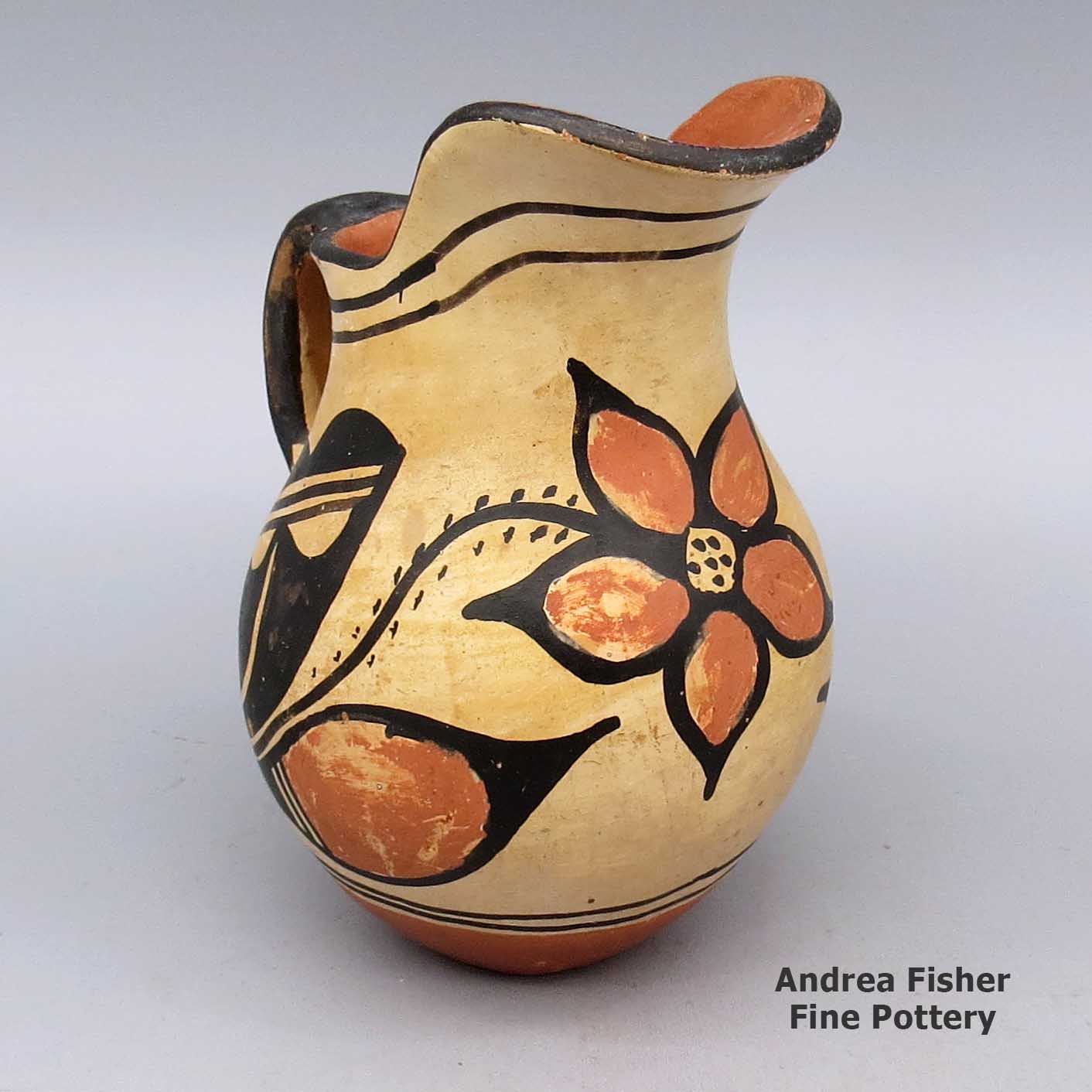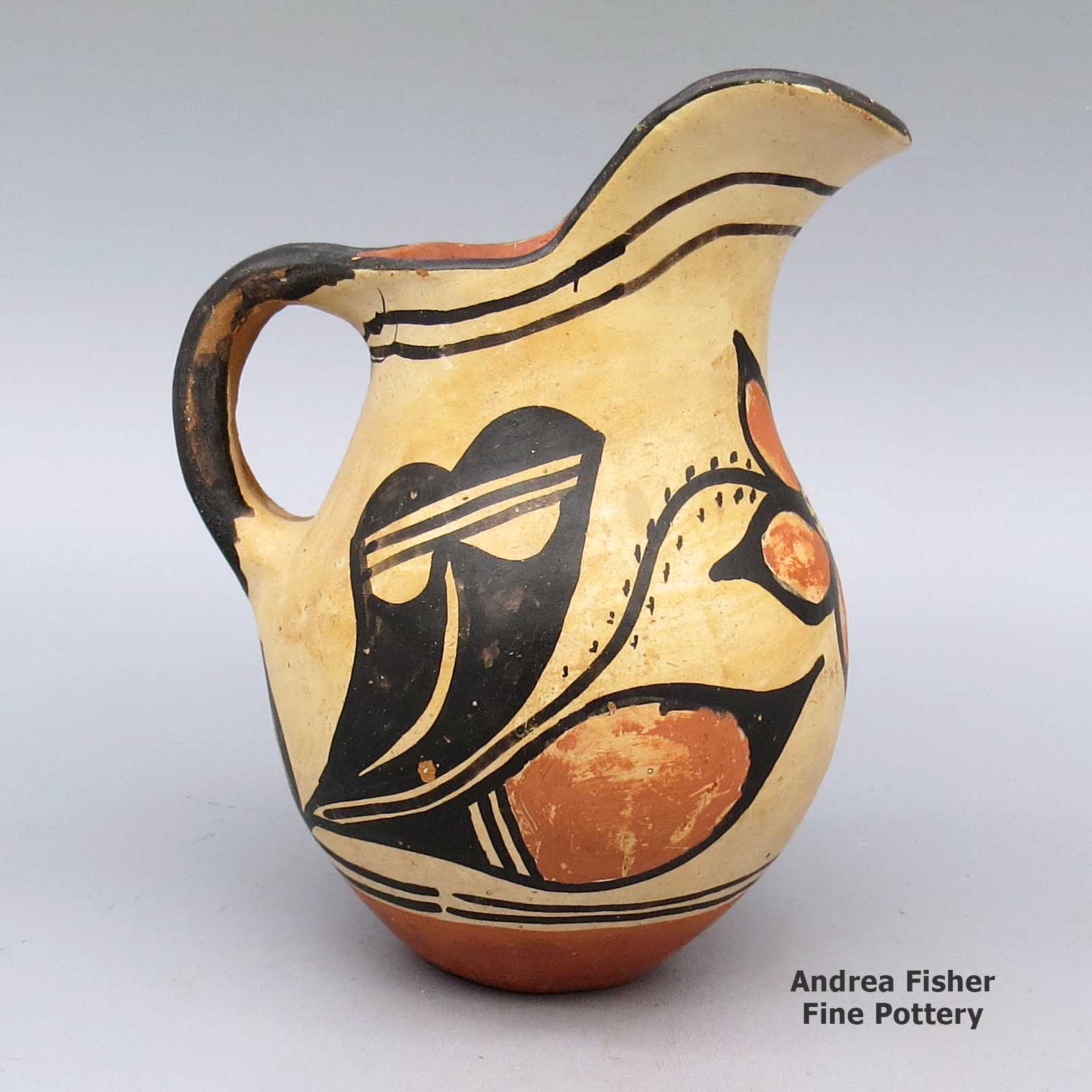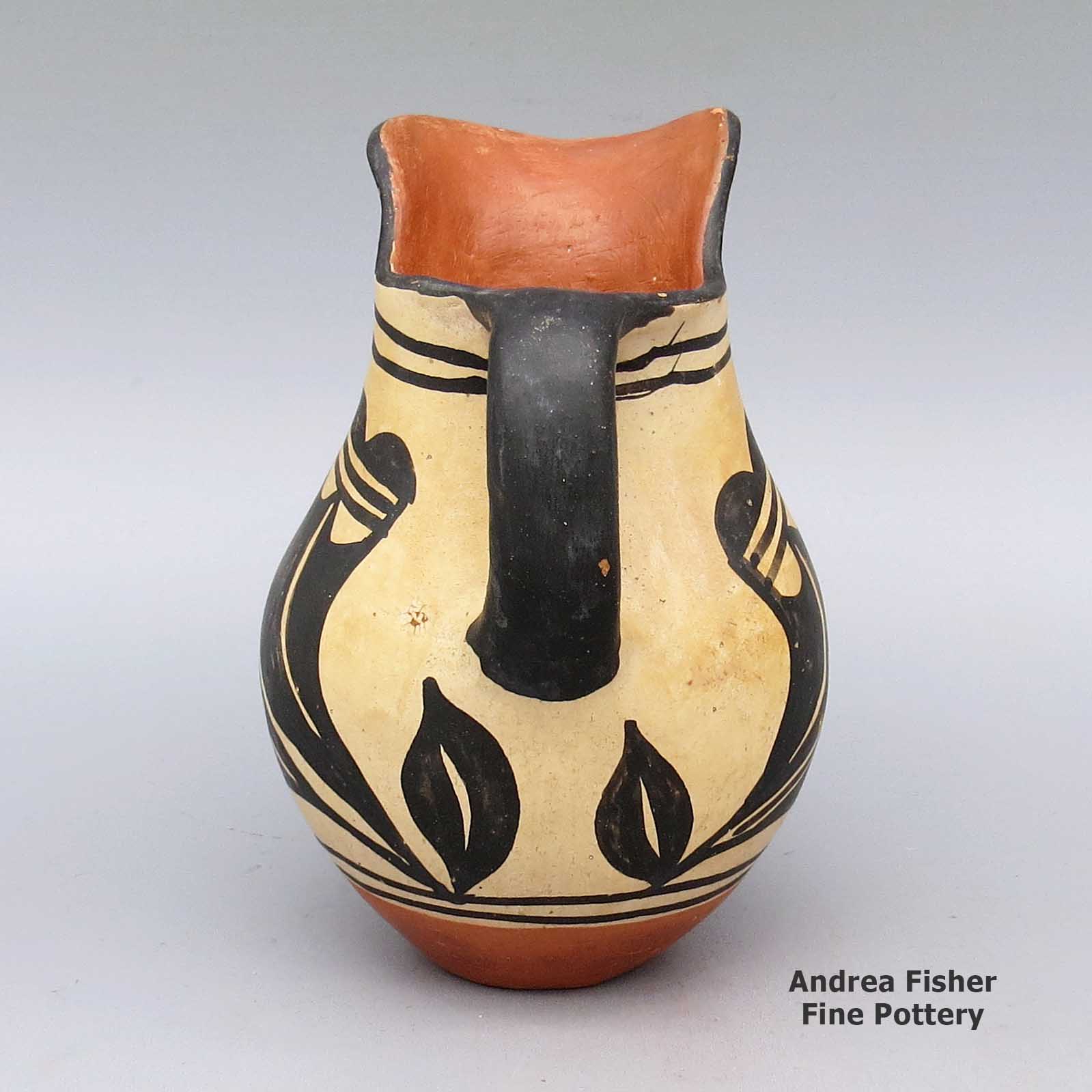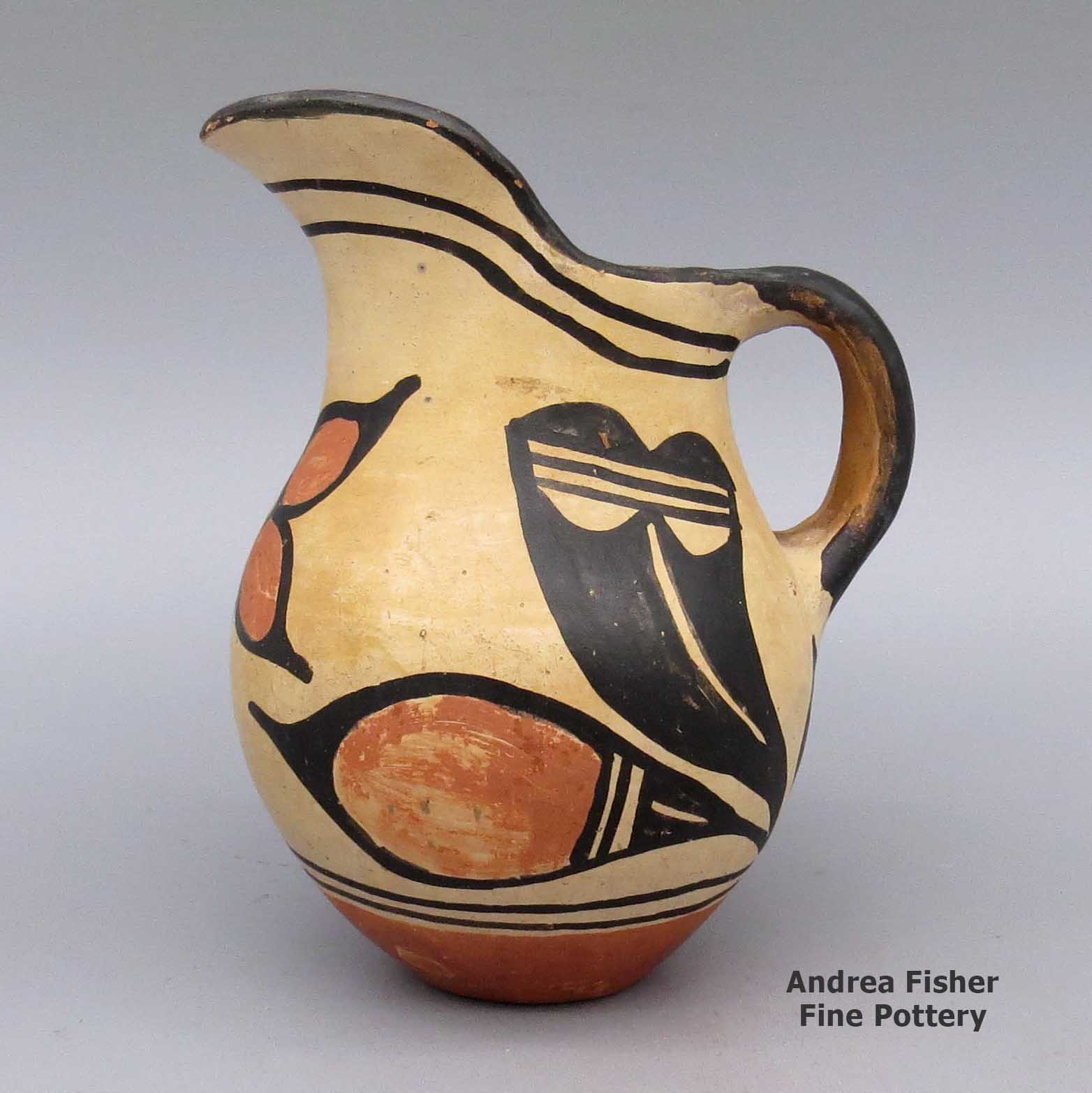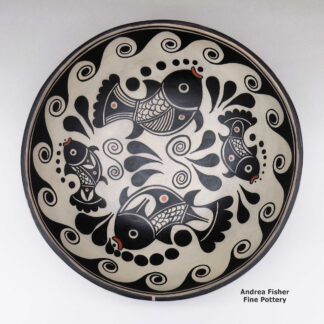| Dimensions | 3.75 × 4.25 × 5.75 in |
|---|---|
| Condition of Piece | Very good, rubbing on bottom and sides, wear on handle |
Unknown Santo Domingo Artist, nusd2m064, Polychrome pitcher with flower and geometric design
$150.00
A polychrome pitcher decorated with a traditional Santo Domingo flower and geometric design
In stock
Brand
Unknown Santo Domingo Potter
A Short History of Santo Domingo Pueblo
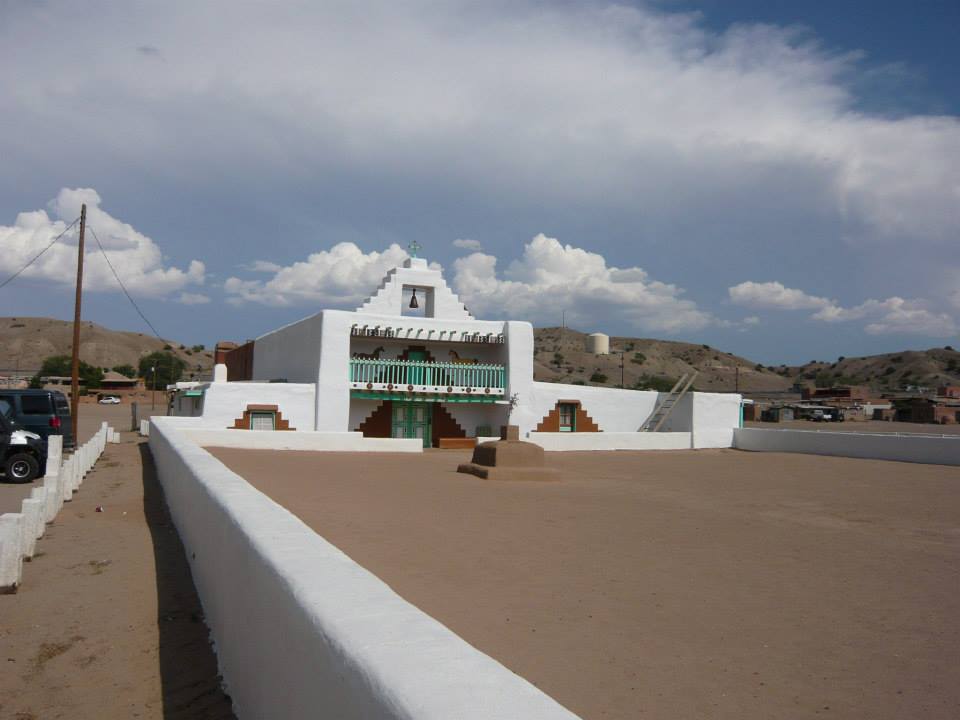
Santo Domingo Pueblo is located on the east bank of the Rio Grande about half-way between Santa Fe and Albuquerque. Historically, the people of Santo Domingo were among the most active of Pueblo traders. The pueblo also has a reputation of being ultra traditional, probably due, at least in part, to the longevity of the pueblo's pottery styles. Some of today's popular designs have changed very little since the 1700's.
In pre-Columbian times, traders from Santo Domingo were trading turquoise (from mines in the Cerrillos Hills) and hand-made heishe beads as far away as central Mexico. Many artisans in the pueblo still work in the old ways and produce wonderful silver and turquoise jewelry and heishe decorations.
Like the people of nearby San Felipe and Cochiti, the people of Santo Domingo speak Keres and trace their ancestry back to villages established in the Pajarito Plateau area in the 1400s. Like the other Rio Grande pueblos, Santo Domingo rose up against the Spanish oppressors in 1680, following Alonzo Catiti as he led the Keres-speaking pueblos and worked with Popé (of San Juan Pueblo) to stop the Spanish atrocities. However, when Spanish Governor Antonio Otermin returned to the area in 1681, he found Santo Domingo deserted and ordered it burned. The pueblo residents had fled to a nearby mountain stronghold and when Don Diego de Vargas returned to Nuevo Mexico in 1692, he attacked that mountain fortress and burned it, too. Catiti died in that battle and Keres opposition to the Spanish crumbled with his death. The survivors of that battle fled, some to Acoma, some to fledgling Laguna, some to the Hopi mesas. Over time most of them returned to Santo Domingo.
In the late 1690s, Santo Domingo accepted an influx of refugees from the Galisteo Basin area as they fled drought and the near-constant attacks of Apache, Comanche, Ute and Navajo raiders in that area.
Today's main Santo Domingo village was founded about 1886.
In 1598 Santo Domingo was the site of the first gathering of 38 pueblo governors by Don Juan de Oñaté. He attempted to force them to swear allegiance to the crown of Spain. Today, the All Indian Pueblo Council (consisting of the nineteen remaining pueblo's governors and an executive staff) gathers at Santo Domingo for their first meeting every year, to continue what is now the oldest annual political gathering in America. During the time of the Spanish occupation, Santo Domingo served as the headquarters of the Franciscan missionaries in New Mexico and religious trials were held there during the Spanish Inquisition.
Today, the people of Santo Domingo number around 4,500 with about two-thirds of them living on the reservation.
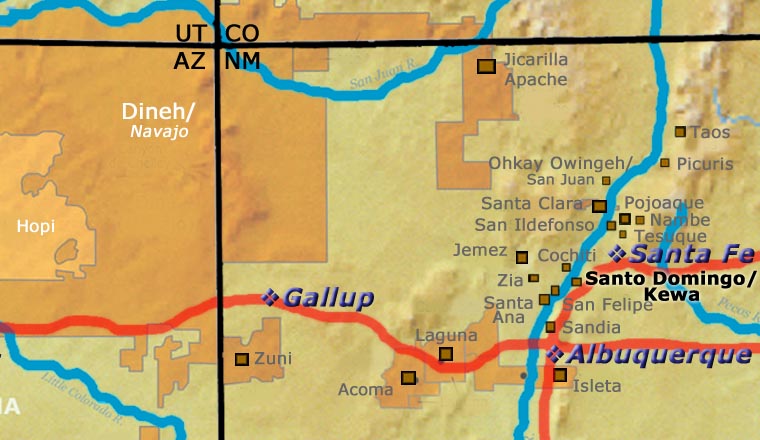
For more info:
Pueblos of the Rio Grande, Daniel Gibson, ISBN-13:978-1-887896-26-9, Rio Nuevo Publishers, 2001
Photo courtesy of Wikimedia Commons, Creative Commons Attribution-Share Alike 3.0 Unported License
Traditional Santo Domingo Design
Santo Domingo is considered a very conservative pueblo, especially when it comes to their religion. Their religion affects every aspect of the people's lives at Santo Domingo. Due to what has happened to them since Coronado and his men first arrived, they have become very secretive in regards to every aspect of their religious practices.
For example, artists are not allowed to depict human forms, especially on products meant for sale to outsiders. That restricts the artist's palette to images of birds, flowers, fish and various geometric patterns symbolizing water, forest, clouds, rain and lightning bolts. There is also a tradition at Santo Domingo of painting their pots completely in the negative using black and red pigments, rather than just painting in black and red on their usual "white" background slip.
Back in the 1920s, Kenneth Chapman, from the Museum of New Mexico, became worried that the Santo Domingo pottery tradition was dying. So he went there and, sitting among the potters, he copied the designs each were painting on their pots and made a book of those. Thomas Tenorio has told us that book is where he got many of his designs from.
About the Pitcher
After Spanish contact, pueblo potters slowly started to change their pottery styles to accommodate the newcomers. "Colonial" pottery started to appear, primarily made for sale or trade to incoming Spanish settlers and adapted for their needs and uses. The pitcher is one of those new shapes that developed.
